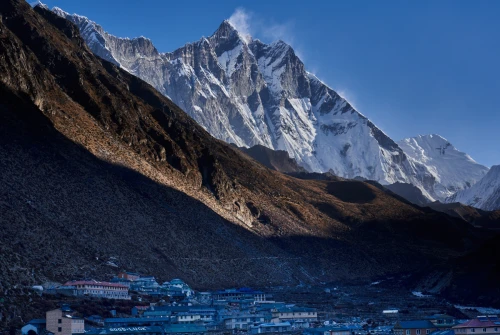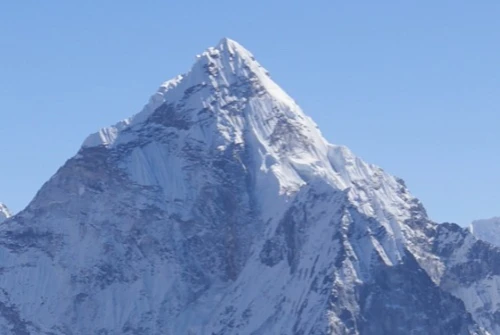Everest Base Camp Trek with Overnight Stay at Base Camp Overview
Experience Everest like never before with this rare and remarkable Everest Base Camp Trek with Overnight Stay at Base Camp. Unlike standard trekking routes, this itinerary is crafted to give you an exclusive chance to sleep at Everest Base Camp (5,364 meters), surrounded by the majestic peaks of the Himalayas and the awe-inspiring Khumbu Icefall a privilege few trekkers ever experience.
While most visitors trek to Everest Base Camp and return to Gorak Shep the same day, this unique adventure allows you to spend the night at the foot of Mount Everest, in specially arranged heated expedition tents, offering a taste of what real climbers feel during their expeditions to summit the world’s highest peak.
At night, witness a sky full of stars like you've never seen before. During the day, walk alongside the famous Everest expedition route, pass legendary Sherpa villages like Namche Bazaar and Tengboche, and acclimatize in scenic spots such as Dingboche and Lobuche.
This immersive Everest Base Camp hiking experience includes breathtaking panoramic views of Mount Everest, Lhotse, Nuptse, Pumori, and Ama Dablam, as well as visits to iconic cultural landmarks, monasteries, and viewpoints like Kala Patthar (5,645 meters) the best place to witness Everest at sunrise.
Whether you're an avid hiker, a mountain lover, or a photographer chasing the perfect shot of Mount Everest from Base Camp, this itinerary offers luxury, adventure, and exclusivity in the heart of the HimalayasIs it possible to stay overnight at Everest?
Yes, it is absolutely possible to stay overnight at Everest Base Camp, providing a once-in-a-lifetime opportunity to immerse yourself in the breathtaking beauty and tranquility of the world’s highest mountain.
Historically, trekking to Everest Base Camp required extensive preparation, expert mountaineering skills, and months of planning. However, with advancements in high-altitude trekking logistics, experienced guides, and improved expedition support, adventurers can now safely camp overnight at Everest Base Camp, turning this iconic trek into a fully immersive Himalayan camping adventure.
Accommodations at Everest Base Camp are basic but well-organized to maximize comfort and safety. Trekkers sleep in durable, insulated expedition tents with specialized high-altitude sleeping bags designed to withstand cold temperatures. Meals are served from a communal camp kitchen, offering hot and nutritious food to refuel after challenging trekking days.
Spending the night at Base Camp not only enhances altitude acclimatization but also gives trekkers the rare chance to experience the magical Himalayan sunrise and sunset views directly at the foot of Mount Everest, creating unforgettable memories and a deep connection with the Everest region.
Why Choose the Everest Base Camp Trek with Overnight Stay?
Embarking on the Everest Base Camp trek with an overnight stay is far more than just a hiking expedition; it is an extraordinary journey that transforms your trekking adventure into an unforgettable Himalayan experience. While the traditional Everest Base Camp trek usually lasting 12 to 14 days allows trekkers to reach Base Camp and descend the same day, this exclusive itinerary offers the rare and thrilling privilege of camping overnight at Everest Base Camp, perched at an awe-inspiring altitude of 5,364 meters (17,598 feet).
An Unmatched High-Altitude Adventure Beyond the Ordinary Trek
Sleeping overnight at Everest Base Camp is a profound voyage into the heart of the Nepalese Himalayas, blending physical endurance, mental strength, and spiritual awakening. This overnight stay turns a demanding trek into a once-in-a-lifetime high-altitude expedition, where you can fully immerse yourself in the raw energy and breathtaking grandeur of the towering peaks that surround you.
Spectacular Sunrise and Sunset Views You’ll Never Forget
Picture yourself settling into your tent as the sun sets behind snow-capped summits, painting the sky in stunning shades of gold, pink, and crimson. Then, waking up before dawn to witness the first light illuminating the majestic peak of Mount Everest, alongside nearby giants such as Lhotse, Nuptse, Ama Dablam, and Pumori. This surreal experience offers trekkers front-row access to some of the most spectacular panoramic mountain vistas on Earth moments that will remain etched in your memory forever.
Get Up Close with the Legendary Khumbu Icefall
Unlike the conventional trek, which often keeps hikers at a safer distance, staying overnight at Base Camp places you within striking proximity to the iconic Khumbu Icefall one of the most dynamic and challenging glaciers in the world. Witnessing the shifting crevasses, towering ice seracs, and constantly moving glacier up close provides a vivid glimpse into the formidable challenges faced by climbers on their quest to conquer Everest’s summit.
Improved Acclimatization for a Safer Trekking Experience
Spending a night at Base Camp offers crucial extra time for your body to acclimatize to the extreme altitude, significantly lowering the risk of Acute Mountain Sickness (AMS). This enhanced acclimatization not only boosts your overall health and safety but also improves your stamina and trekking performance, enabling you to push your limits responsibly in the high Himalayas.
An Exclusive, Authentic Himalayan Adventure for Dedicated Trekkers
Due to unpredictable weather and logistical complexities, only a select few trekking operators offer the overnight Everest Base Camp camping experience making it a truly exclusive journey. This adventure is perfect for passionate mountaineers, avid photographers seeking unique and dramatic Himalayan landscapes, and travelers yearning for a deep, authentic connection with the Everest region’s natural and cultural wonders.
Who Is This Everest Base Camp Trek Overnight Stay For?
The Everest Base Camp trek overnight stay is an extraordinary, once-in-a-lifetime expedition crafted for adventurous travelers who want to go beyond the typical Everest Base Camp trek and dive deep into a fully immersive Himalayan trekking experience. This exclusive journey offers a rare chance to connect intimately with the majestic mountains, pristine landscapes, and vibrant Sherpa culture of Nepal’s Everest region.
This specialized itinerary is perfect for passionate landscape photographers, nature lovers, and outdoor enthusiasts eager to capture the breathtaking Everest sunrise, golden hour mountain panoramas, and iconic Himalayan peaks such as Lhotse, Nuptse, and Ama Dablam, from an unparalleled vantage point rarely accessed by other trekkers.
Additionally, this trek appeals to experienced high-altitude trekkers, mountaineering enthusiasts, and thrill-seekers seeking a more challenging and authentic extreme altitude trekking adventure. Spending the night at the base of the world’s tallest peak Mount Everest not only intensifies the physical challenge but also creates unforgettable memories and a profound sense of achievement.
Whether you’re a fearless adventurer craving a unique Himalayan expedition, a dedicated photographer pursuing flawless natural light and epic mountain views, or a cultural traveler looking for a meaningful connection with the Everest region’s rugged wilderness and local traditions, this overnight Everest Base Camp trek promises a deeply rewarding, transformational, and unparalleled journey that redefines mountain trekking.
Permits for Everest Base Camp
Khumbu Pasang Lhamu Rural Municipality Entrance Permit (NPR 2000 per person)
Sagarmatha National Park Entry Permit (NPR 3000 per person)
Acquiring these permits helps to preserve the region's natural beauties and cultural legacy, ensuring its beauty for future generations.
Best Season for the Everest Trek
Spring (March to May):
Autumn (September to November):
Both these seasons offer beautiful experiences and breathtaking views, making them the best times to embark on the Everest Three Passes Trek.

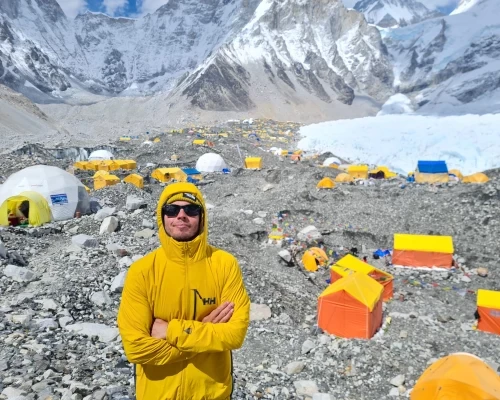
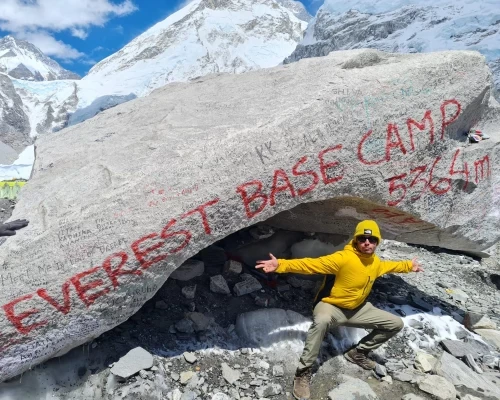
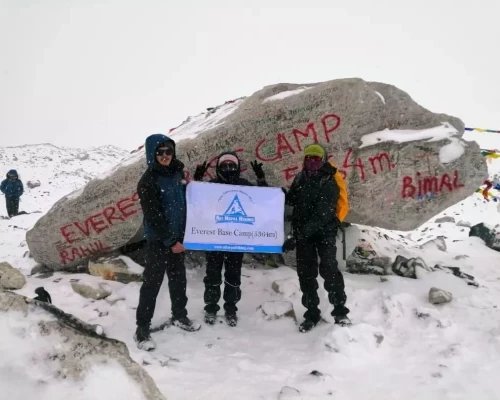
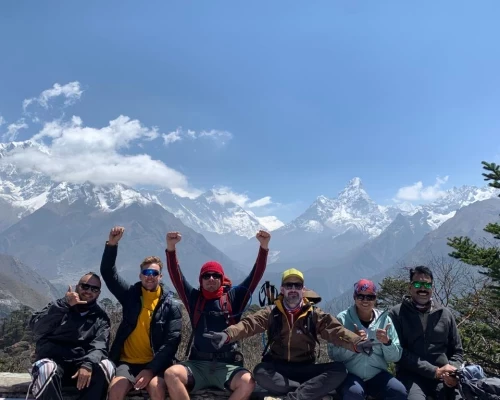
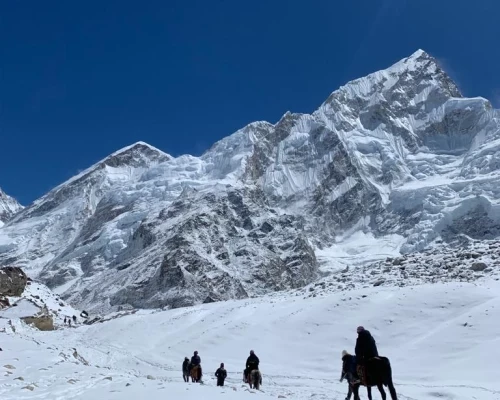
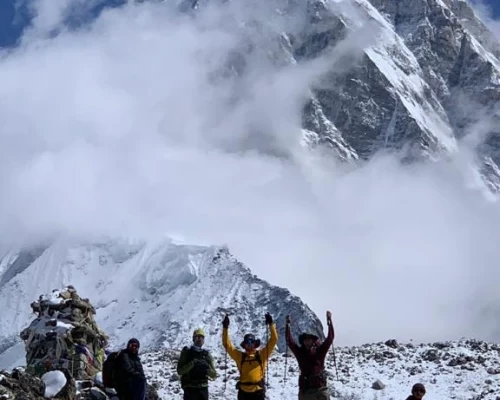
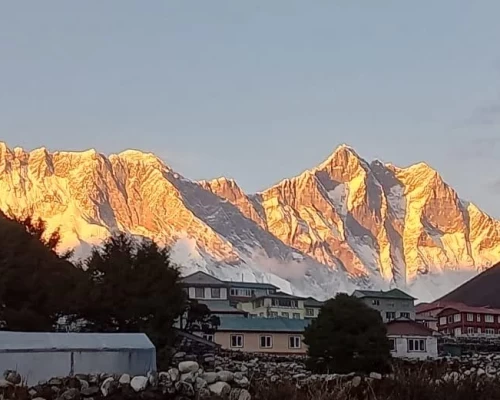
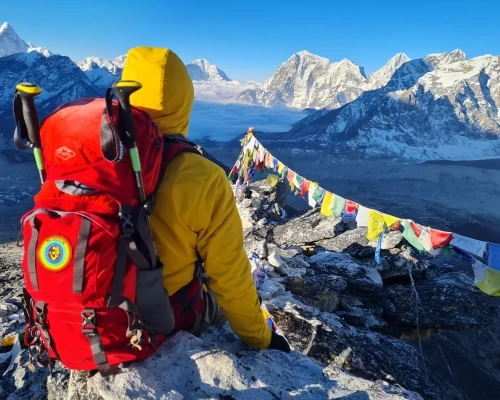
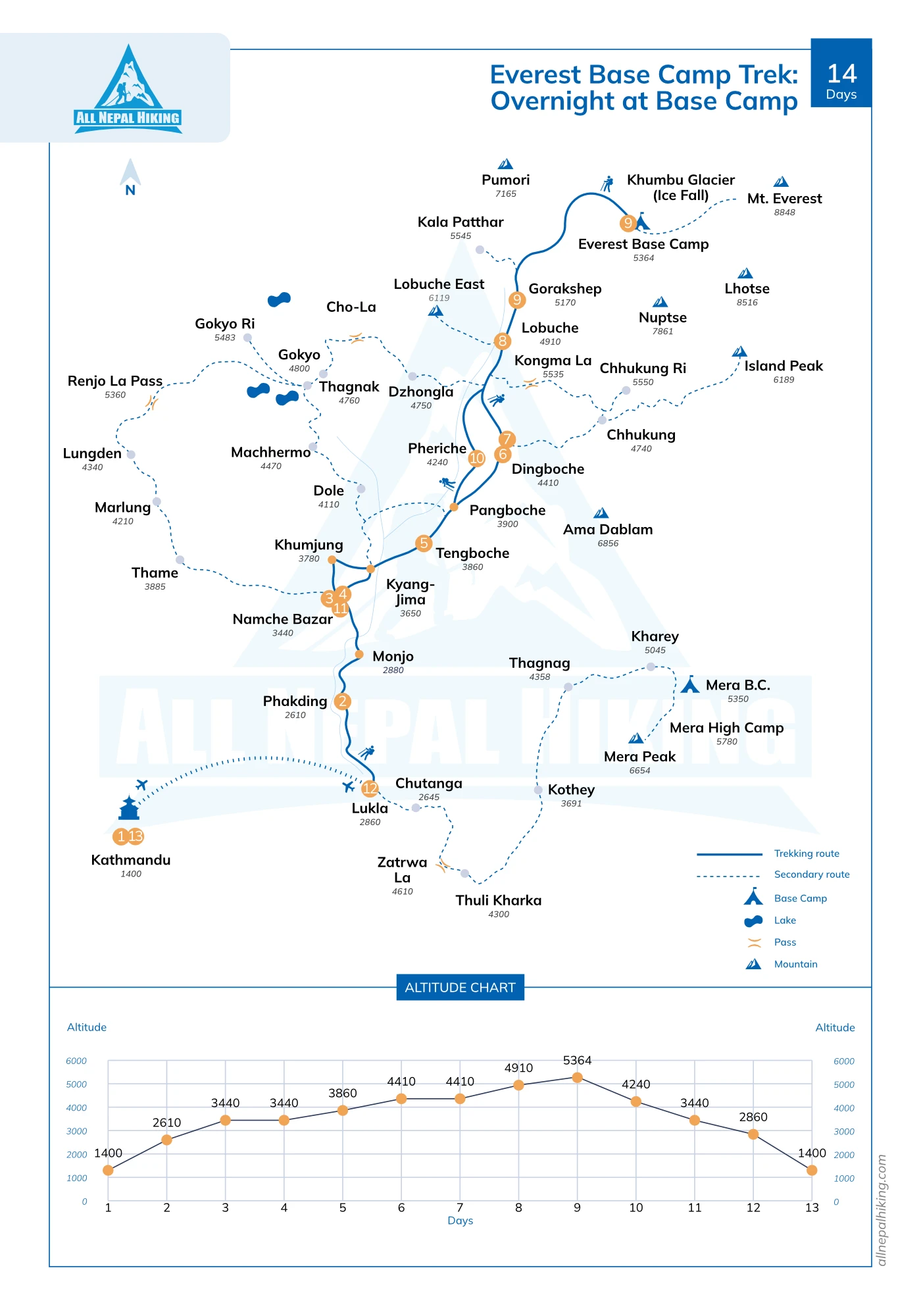

 based on 9 reviews
based on 9 reviews